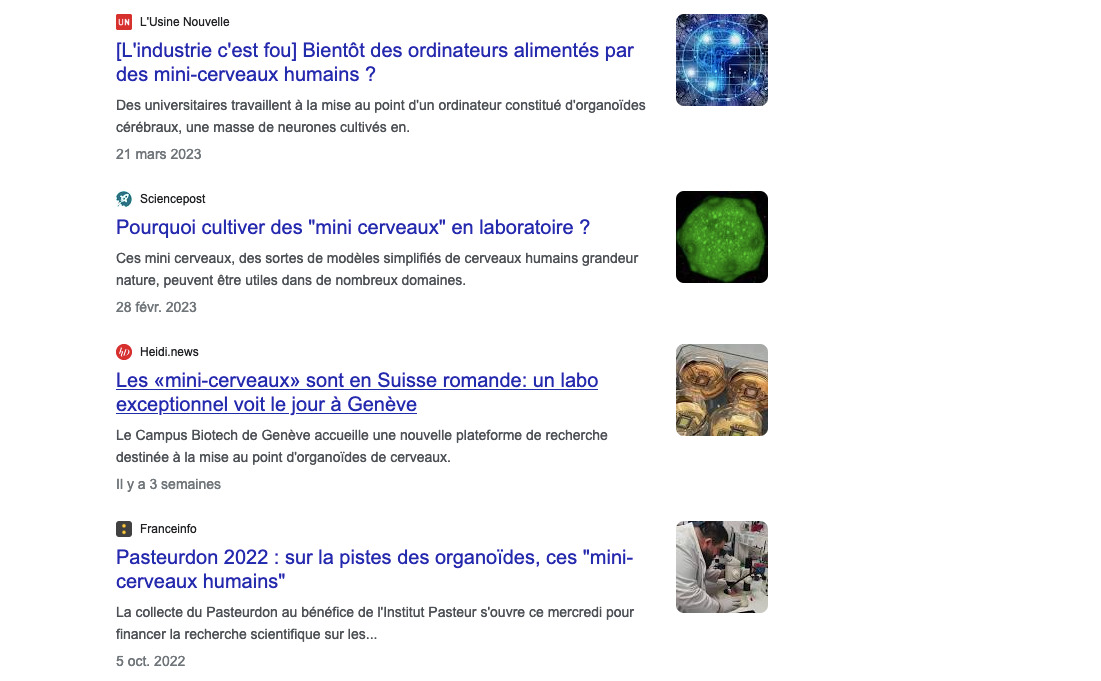Published on
Updated
Reading 2 mins.
In a press release, the National Academy of Medicine deplores the misuse of distorted scientific terminologies which can create distrust of science. This is particularly the case for cerebral organoids, often translated as “mini-brains”.
“The abusive interpretation of terminologies and scientific works can be a source of confusion and mistrust vis-à-vis science”. This is the fear of the members of the Academy of Medicine who published a press release concerning in particular the “cerebral” organoids described in the press as “mini-brains”.

Brain organoids, aggregates with enormous potential for science
In its press release, the Academy does not question the tremendous usefulness of these adult stem cells, which sometimes reproduce human functions in scientific studies.
“These cells, in the presence or not of an artificial or natural extracellular matrix, group together in aggregates called organoids which can reproduce several functions of the tissue concerned. Their study is of considerable interest to understand the cellular and molecular mechanisms involved in cell differentiation, the mode of action and toxicity of drugs, the physiopathology, to limit animal trials, and to improve the treatment of certain diseases.
Several interests are particularly underlined by the sages concerning the cerebral organoids:
- In neurosciences, the use of organoids extends the field of investigations hitherto restricted by the difficulty of access, in humans, to the tissues and cells of the central nervous system;
- In the laboratory, the production of three-dimensional structures, which are cerebral organoids, then makes it possible to study them in vitro or after having grafted them into rodents;
- These also present an advance for studying the connectivity between different regions of the brain or for studying the development of cerebral tissue, from “embryoids” carrying an elementary cerebral structure.
But an ethical duty to distinguish them from the human brain
Nevertheless, the name “mini-brains” is an abusive shortcut which has several limits for the Academy of Medicine. A first ethical limitation of the research:
“The cellular activities observed in these brain organoids cannot be equated with the cognitive, sensory or motor processes specific to the human brain. If the scientific contribution which attaches to the study of these organoids, is important, the presentation of this research work as relating to the development of mini-brains which could be endowed with sensitivity or even with minimal consciousness, amounts to an abusive and distorting interpretation of the objectives and results of this work”.
In France, research using human embryonic cells is regulated by law. The sages also posit a risk of public distrust of science in general:
“An abusive interpretation of the objectives and results of experimental work on organoids, particularly cerebral organoids, risks feeding an erroneous view of this research in the minds of the public and arousing distrust of science, whereas that progress is expected in the treatment of several neurological diseases”.
